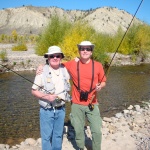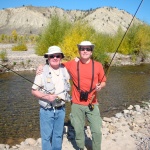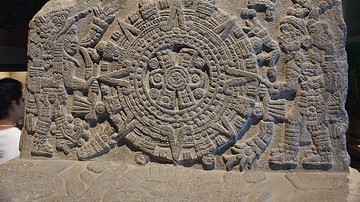Review

| Rating: | |
|---|---|
| Title: | Teotihuacan: City of Water, City of Fire |
| Author: | Matthew Robb |
| Audience: | University |
| Difficulty: | Medium |
| Publisher: | University of California Press |
| Published: | 2017 |
| Pages: | 444 |
Teotihuacan: City of Water, City of Fire captures just about everything that we now know about one of the most influential yet obscure civilizations of Mesoamerica. The readable essays are geared toward anyone from college students to doctorates, while the copious and detailed photographs are appealing to readers with an interest in archaeology or simply a general sense of wonder.
Teotihuacan is not even that old, but its origins are already obscure. Founded in the 1st century CE and located within the Valley of Mexico, Teotihuacan was once the “most populous city in the Americas,” and probably among the five or ten largest urban areas in the world until 500 CE, according to a suitably titanic and lavish multidisciplinary exhibition catalog recently assembled by the Fine Arts Museums of San Francisco-de Young and the Los Angeles County Museum of Art.
This lovely boulder of a book covers in vibrant photographs and detailed essays one of the most influential yet obscure civilizations of Mesoamerica. The people of Teotihuacan may be gone - or, as is likely the case, have been subsumed into succeeding cultures - but through their surviving architecture and artwork, we have been able to reasonably assess some understanding of their legacy.
The readable essays here are geared toward anyone from college students to doctorates, while the copious and detailed photographs are appealing to anyone with an interest in archaeology or simply a general sense of wonder. The sheer fact that, despite intensive research, we simply do not currently know much at all about the Teotihuacan civilization aside from educated guesswork based on ruins and artifacts only adds to the book's allure.
Edited by Matthew H. Robb, chief curator of the Fowler Museum at the University of California, Los Angeles, Teotihuacan: City of Water, City of Fire seeks to sift the secrets of this nebulous city from what remains. Robb collects the science and suppositions of 20 additional experts, whose works range from “A Speculative History of Teotihuacan” to “Pumas Eating Human Hearts? Animal Sacrifice and Captivity at the Moon Pyramid”, and from “The Storm God: Lord of Rain and Ravage” to “The Colors of Time: Teotihuacan Mural Painting Tradition”.
This sweeping range of discourse covers archaeology, architecture, theology, anthropology, history, and art - a full pantheon of study meant to satisfy even the most demanding and educated reader. But even this swirl of subjects cannot answer the fundamental questions of Teotihuacan that have eluded explorers since the Aztecs: what made this city the very first metropolis of the Western Hemisphere, attracting migrants from across the region to its intricate religious and artistic impulses; its relative stability, due assumedly to the standing military that a wealthy city-state could afford; and particularly to its booming economy. Teotihuacan's affluence was centered on what was immediately available: fish and waterfowl from the adjacent Lake Texcoco; timber and wild game from the surrounding forests; and basalt, obsidian, lime and chert from nearby mining sites.
Teotihuacan: City of Water, City of Fire comprises a three-part introduction that admits to science's “speculative history” of the city, six diverse and wide-ranging essays, and two thoroughly detailed discussions about the problematic mapping of the city's ruins.
This comprises the first 200 pages, after which are another 200 pages of meticulous photographs of objects collected in last year's exhibition at San Francisco's de Young Museum. These echo the diversity of the essay topics: “Mirror with Jaguar Mosaic”, serpentine masks, standing figures and incised shells, stonework, ceramics, murals, and more, all meticulously assigned to the various regions of the city from which they were recovered. This is all we know, and perhaps all we need to know; the quality of these carefully retrieved artifacts is such that they can speak for themselves.
Solidly and exquisitely published by the redoubtable University of California Press, Teotihuacan: City of Water, City of Fire captures just about everything that we now know regarding this cryptical all-American city, the role model for future metropolises such as Tikal, Monte Alban, and Teotihuacan's ultimate inheritor, the Aztec capital of Tenochtitlán.
About the Reviewer
Cite This Work
APA Style
Funk, W. H. (2018, July 20). Teotihuacan: City of Water City, of Fire. World History Encyclopedia. Retrieved from https://www.worldhistory.org/review/192/teotihuacan-city-of-water-city-of-fire/
Chicago Style
Funk, William H.. "Teotihuacan: City of Water City, of Fire." World History Encyclopedia. Last modified July 20, 2018. https://www.worldhistory.org/review/192/teotihuacan-city-of-water-city-of-fire/.
MLA Style
Funk, William H.. "Teotihuacan: City of Water City, of Fire." World History Encyclopedia. World History Encyclopedia, 20 Jul 2018, https://www.worldhistory.org/review/192/teotihuacan-city-of-water-city-of-fire/. Web. 01 Jul 2025.




